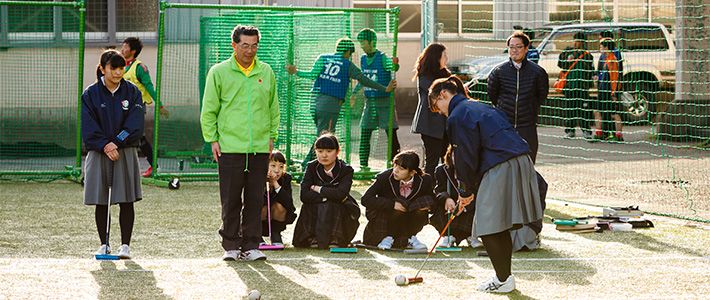
Go Gateball! Enthusiastic High Schoolers Revive a Fading Sport
Society- English
- 日本語
- 简体字
- 繁體字
- Français
- Español
- العربية
- Русский
Gateball Reborn
Gateball is one of only a handful of competitive team sports to have emerged from Japan. It was originally conceived as a game for Japanese children, who had few toys or other amusements to divert them in the hardscrabble days following the end of World War II. Yet because gateball, a mallet game resembling croquet, places so few physical demands on the player, it soon took root among Japan’s elderly instead. During the 1990s there were as many as 6 million gateball devotees in Japan, and old folk battling it out on local gateball courts were a ubiquitous sight across the country.
Now, however the tastes of older Japanese are diversifying, and the number of gateball enthusiasts has plunged. Today only an estimated 1 million people still play the game in the country of its birth, even as it is beginning to find an enthusiastic following in other Asian countries and beyond. Yet while gateball’s traditional patrons may be turning away, this once fading sport is experiencing a renaissance among a decidedly unexpected population: Japan’s high school students. From mammoth urban schools like Sakushin Gakuin in Utsunomiya, Tochigi Prefecture, to elite institutions like Tokyo’s Kaisei, famed for its success in placing graduates into Japan’s top universities, high school gateball clubs and circles are popping up around the nation. The growing youth interest in the competitive sport is apparent in the Japan Junior Gateball Championships (limited to players 18 years or younger), which took place for the twenty-second time on July 29–30 this year.
One of the schools making its mark in the most recent junior championships has been Aomori Yamada High School, located at the far northern tip of Japan’s largest island of Honshū, in Aomori Prefecture. Aomori Yamada is one of Japan’s most famous sports high schools. Its soccer team has taken the national title, while its baseball, men’s rhythmic gymnastics, badminton, jūdō, and other squads all compete at the national level. The school also counts among its graduates some of the most famous names in Japanese sports today, including tennis star Nishikori Kei and table tennis Olympic medalist Fukuhara Ai.
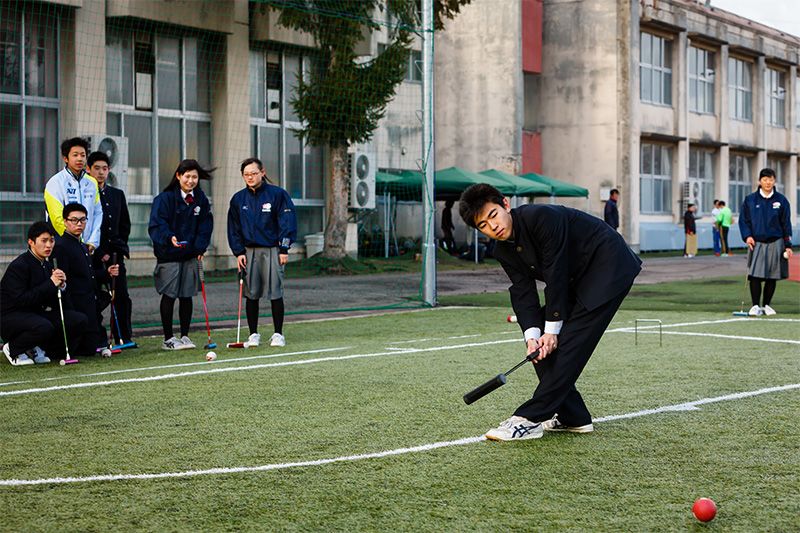 Aomori Yamada’s gateball club uses the school’s futsal court for practice sessions.
Aomori Yamada’s gateball club uses the school’s futsal court for practice sessions.
Mallets Held High!
“To be honest,” remembers Aomori Yamada Principal Hanada Atsushi today, “when I was first asked if we could start up a gateball club at the school I was skeptical.” In the end, however, he was persuaded by the passion of Kumeta Yūji, chairman of the Aomori Prefecture Gateball Association, who argued that it was exactly because the number of elderly aficionados was declining that he wanted to introduce the game to younger players. Hanada finally agreed to host a gateball demonstration on the school grounds. After the presentation, nearly 30 students said they were interested in trying the sport, and in 2013 the school’s gateball club was born. It was not long before Principal Hanada started seeing young club members diligently striking balls with their mallets in a far corner of the schoolyard, all under the watchful eyes of elderly volunteer instructors.
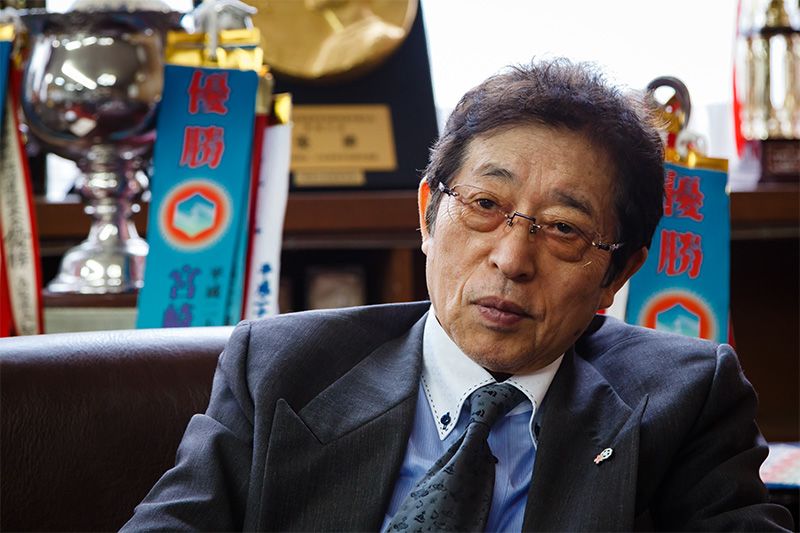 Aomori Yamada Principal Hanada Atsushi at first dismissed gateball as a sport for old folks, but he says he changed his mind when he saw his students throwing themselves into practice.
Aomori Yamada Principal Hanada Atsushi at first dismissed gateball as a sport for old folks, but he says he changed his mind when he saw his students throwing themselves into practice.
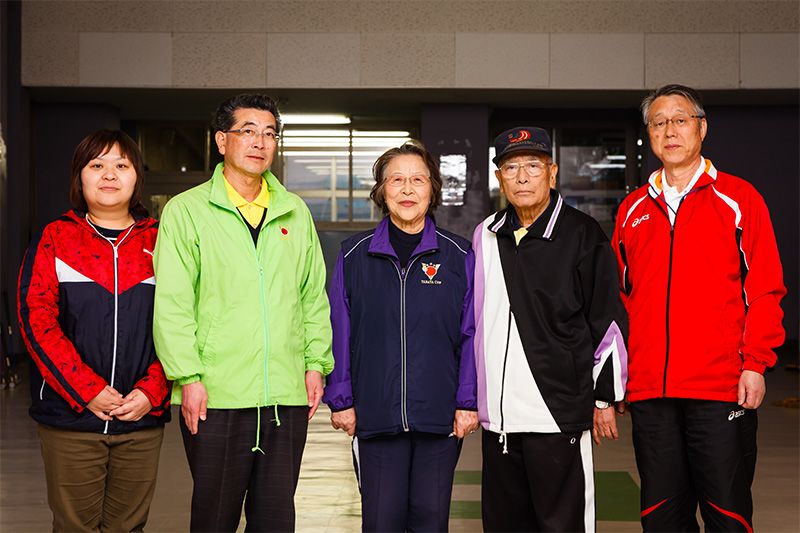 Aomori Prefecture Gateball Association chairman Kumeta Yūji (second from right), who pushed for the creation of the gateball club, joins the club instructors. One female instructor in her thirties (far left) has been playing gateball since she was a child.
Aomori Prefecture Gateball Association chairman Kumeta Yūji (second from right), who pushed for the creation of the gateball club, joins the club instructors. One female instructor in her thirties (far left) has been playing gateball since she was a child.
Launching the club was fine, but as there were no other high schools with gateball clubs in all of Aomori Prefecture, there was no local competition for the members to hone their skills against. Thus it was that the still green Aomori Yamada team charged straight into that summer’s Japan Junior Gateball Championships without having been tried and tested in lower-level selection tournaments. The results were as humiliating as might be expected, as the newbies went up against juggernaut Sakushin Gakuin and other high school gateball powerhouses on their very first outing.
“After that 2013 experience I was sure all the club members would quit,” recalls Aomori Yamada teacher and club faculty advisor Norita Shūichi. But he was wrong. Crushing defeat had the exact opposite effect on the members, lighting a fire under their fighting spirit. They threw themselves into practice heart and soul, and after honing their skills in tournaments in other prefectures, the girls’ team battled all the way to third place in the national championships for two years running in 2015 and 2016. The gateball club members had the honor of being praised for their achievements in front of the entire student body, just like the school’s other illustrious sports clubs had been before, by the once doubtful Principal Hanada.
That experience changed the attitude of the club members for good. At first many of them had tried to hide their gateball mallets on their way to school, embarrassed to be seen playing an old folks’ game. But since the nationals, they have been striding up to the school gates, mallet cases slung proudly across their backs.
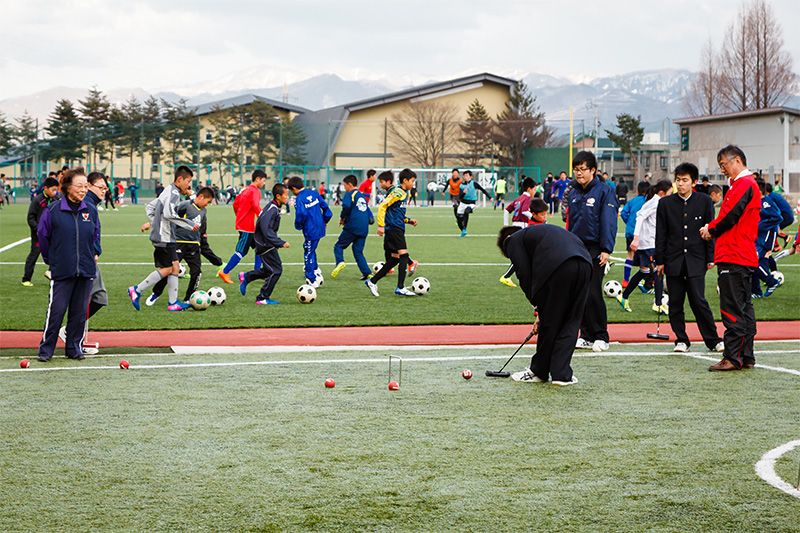 Club members practice while Aomori Yamada’s nationally ranked soccer team drills nearby.
Club members practice while Aomori Yamada’s nationally ranked soccer team drills nearby.
A Battle of the Brains
Currently the gateball club has nine members, all eleventh and twelfth graders. The day we visited, eight new tenth graders had joined the practice to experience what the club was like. All of the students, regular club members and first-timers alike, were from Aomori Yamada’s elite academic track for students planning to apply to Japan’s national universities and top-ranked private universities. Students in this track have an exceptionally hard schedule, with eight hours of classes a day lasting until 6:00 PM most days of the week, so club members can only practice on Monday, the one day with only six class hours. Every minute counts, and if they cannot use the outside court because of rain or snow, they simply unroll artificial turf in the school corridors and work on their strokes.
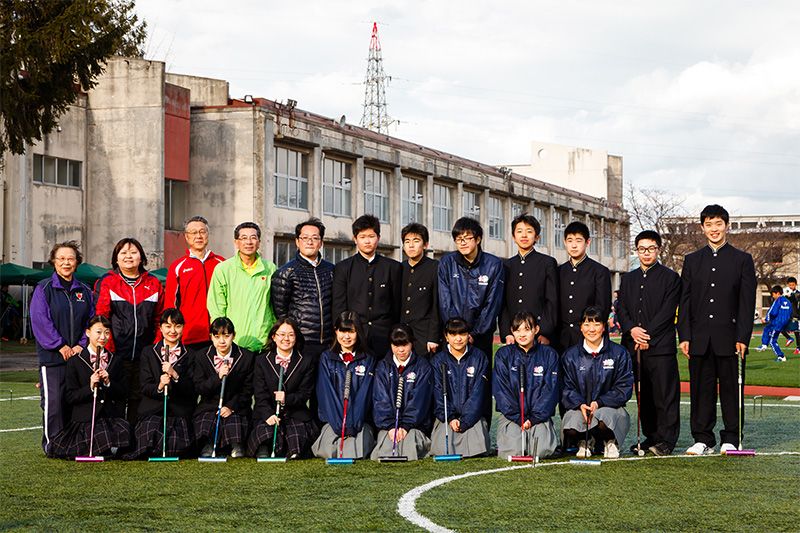 Veteran members and their instructors pose with newcomers trying out the club for their very first time.
Veteran members and their instructors pose with newcomers trying out the club for their very first time.
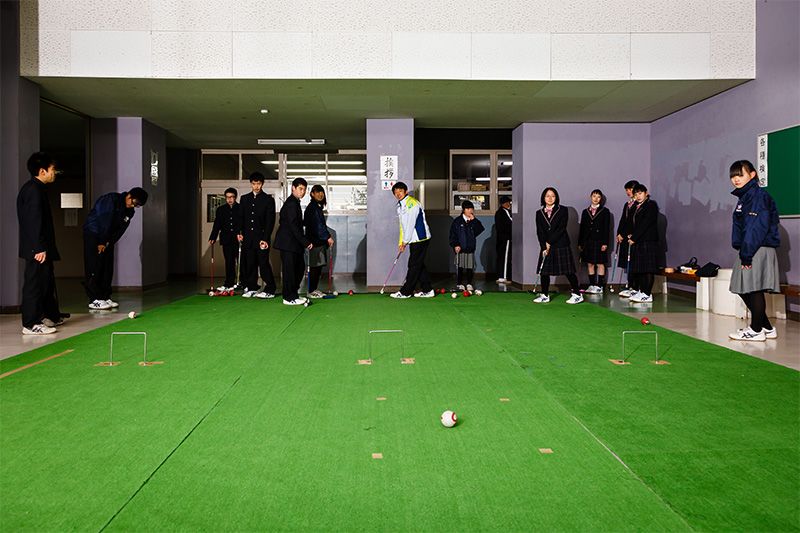 When the weather turns bad, just roll out the artificial turf, place the gates, and practice indoors.
When the weather turns bad, just roll out the artificial turf, place the gates, and practice indoors.
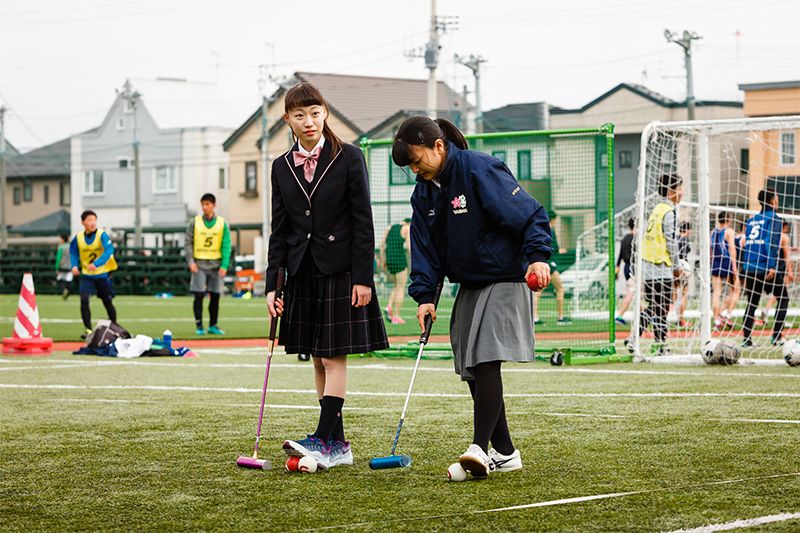 An older club member (right) patiently explains the tricks of striking the ball to a nervous freshman.
An older club member (right) patiently explains the tricks of striking the ball to a nervous freshman.
Gateball is a team sport, five players facing off against five. The point is for team members to strike the balls bearing their own numbers in consecutive order, collaborating to get as many of the team’s balls through the three gates on the court in the correct order and hitting them against the goalpost before the 30-minute time limit is up. It is an intensely competitive game, with victory decided by the combined points of all five members of each team.
“At first, it was fun enough just learning how to get my ball through the gates, and getting to the point where I could hit another player’s ball with my own,” says junior Munakata Yūki. “But what I really find interesting now is thinking strategically, like calculating where to leave my ball so the other team can’t knock it out of position. And then, since a single shot can change the course of the entire game, anyone can become the team’s key player from one match to the next. I find that really appealing.”
Indeed, this is one thing all the club members seem to agree on. The true allure of gateball, they say, lies in its unique combination of intricate strategic thinking rivaling shōgi and chess, and the social fun you can only get from team play. It is a sport, they all agree, that only gets deeper the better you become.
Certainly club captain Seitō Arisa, a junior this year, thinks so. “When I watch videos of matches between top-level teams on YouTube,” she says, “I’m constantly thinking to myself, ‘Wow, I never thought of that strategy before!’ I learn so much that that once I start watching, I can’t make myself stop.” Indeed, some club members say that after school, they do solo practice on the carpet at home in pursuit of the perfect winning strategy.
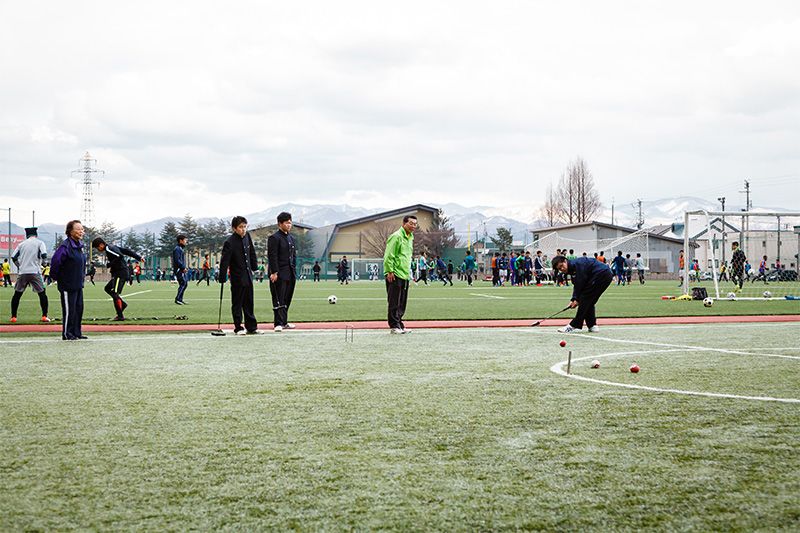 Gateball requires thinking many moves ahead. Players position their own balls where teammates can easily deflect them through a gate.
Gateball requires thinking many moves ahead. Players position their own balls where teammates can easily deflect them through a gate.
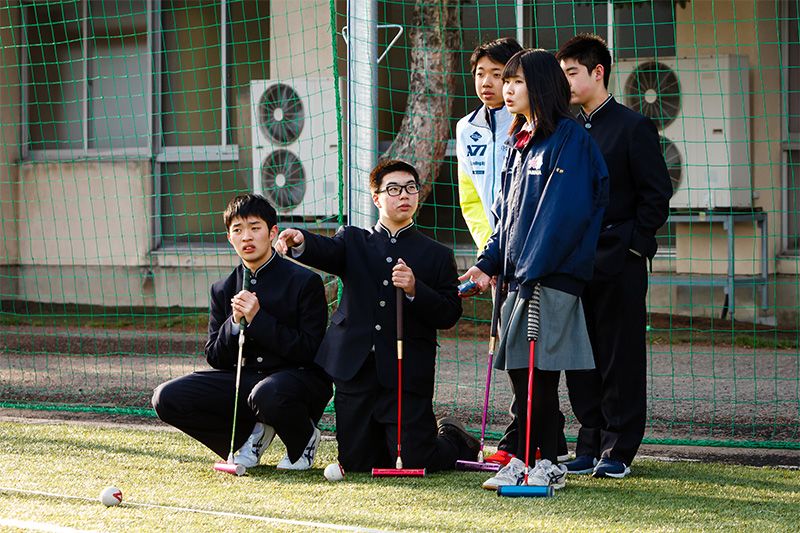 Debate arises frequently over the most advantageous spot to leave a ball.
Debate arises frequently over the most advantageous spot to leave a ball.
Our Dream? To Be Aomori Yamada, the Gateball Champs!
Recently the club has been taking monthly road trips to open gateball competitions in other prefectures to compete against top-level teams and boost their game. Their ride for these excursions is club faculty advisor Norita Shūichi’s van, with Norita himself at the wheel, and the trips have taken them as far as Niigata and Nagano Prefectures, more than five hours away. Norita obtained a medium-sized motor vehicle license just for these sorties.
“The students are giving it their all, so what choice do I have?” laughs Norita. “What do you think? I must be the best club manager cum bus driver in Japan!”
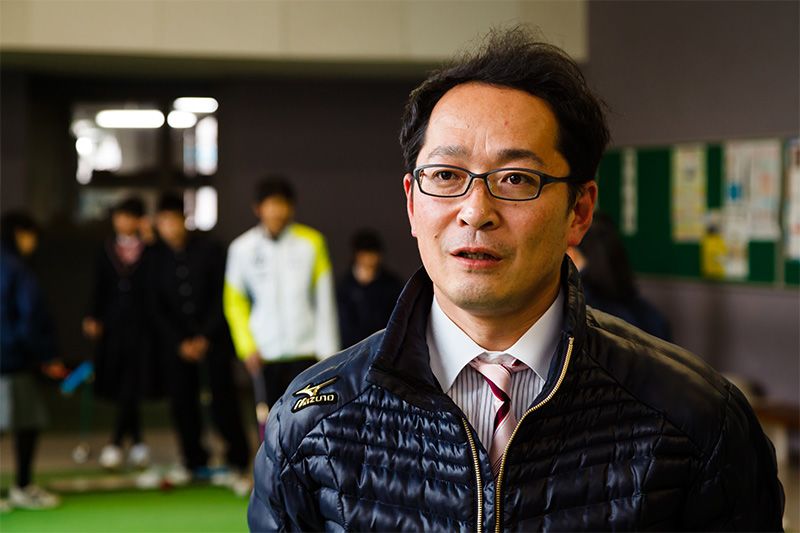 Aomori Yamada teacher Norita Shūichi puts long hours into advising the club, even getting a medium-sized motor vehicle license to take them to out-of-town matches.
Aomori Yamada teacher Norita Shūichi puts long hours into advising the club, even getting a medium-sized motor vehicle license to take them to out-of-town matches.
The other thing Norita drives into his students is the need to keep their enthusiasm for gateball from interfering with their studies. No matter how late they get home from a road trip, he expects them all to be in class on time the next morning, and he demands that they score better than passing grades on all of their exams. This spring one club member qualified for the prestigious University of Tokyo, suggesting that gateball might just possibly be good for academics as well.
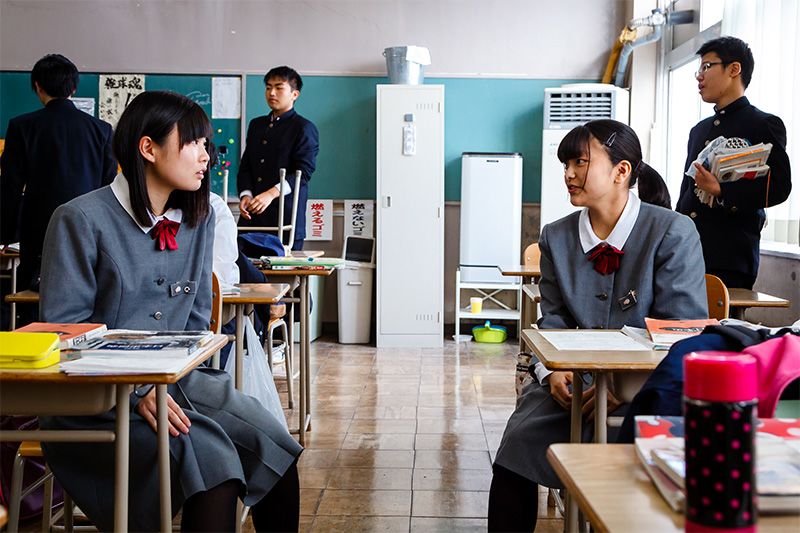 All gateball club members are in Aomori Yamada’s special academic track for students seeking to enter Japan’s top universities. Except for Mondays, when they have afternoon gateball practice, they are all in class until 6:00 every school day.
All gateball club members are in Aomori Yamada’s special academic track for students seeking to enter Japan’s top universities. Except for Mondays, when they have afternoon gateball practice, they are all in class until 6:00 every school day.
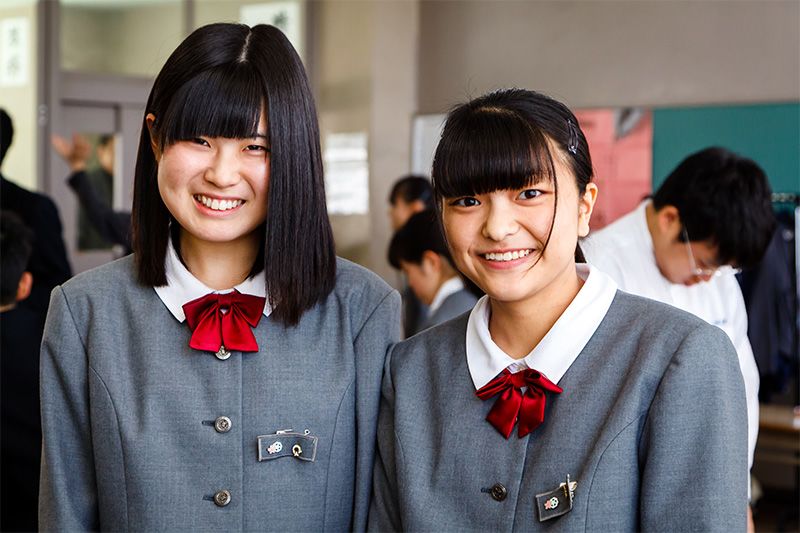 Club members all say gateball is a welcome change of pace from their relentless studies.
Club members all say gateball is a welcome change of pace from their relentless studies.
The students’ greatest goal this year was to take first place in both the boys and girls categories in the twenty-second Japan Junior Gateball Championships, held in Saitama Prefecture in July. They sadly fell short of this goal, but put up solid performances in tournament play, with the girls’ squad taking second place and the boys’ team coming in third.
The club members continue to put their all into their practice sessions in the hope that gateball will spread among their contemporaries and become a major high school sport. When it does, they believe, Aomori Yamada High School will be the gateball powerhouse to beat. Their energy makes it clear that this game, once a dwindling pastime of the elderly, has a long future ahead of it in Japan.
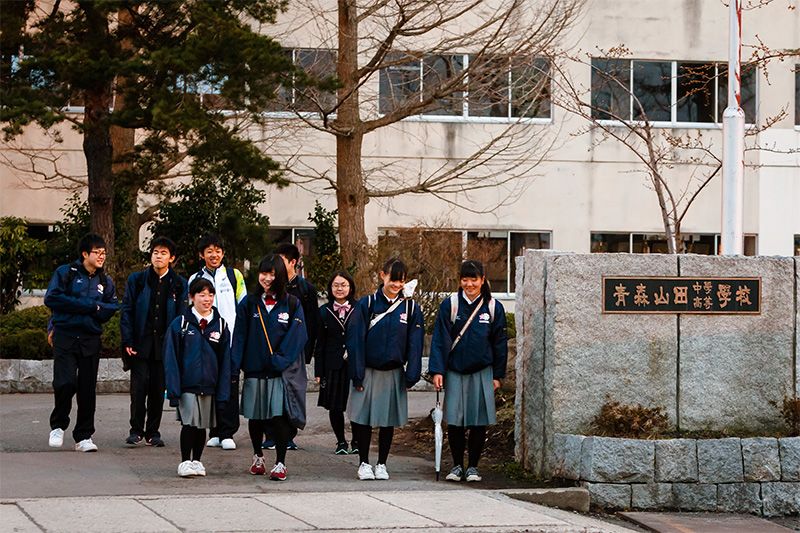 Club members head home after another day’s practice, some with mallet cases hand-stitched by their mothers slung across their backs.
Club members head home after another day’s practice, some with mallet cases hand-stitched by their mothers slung across their backs.